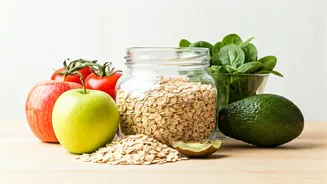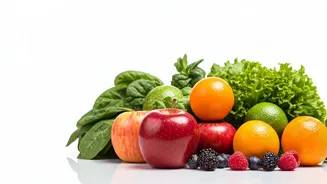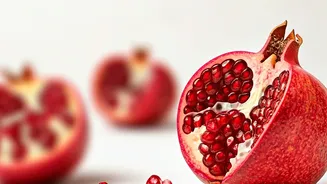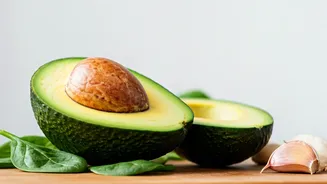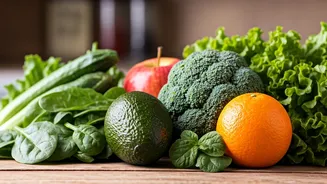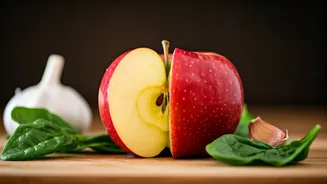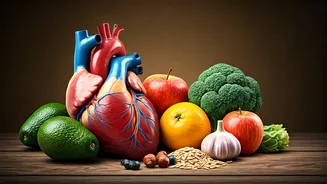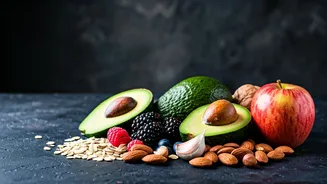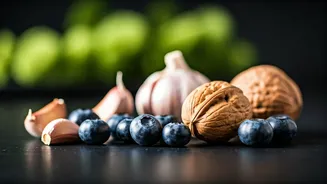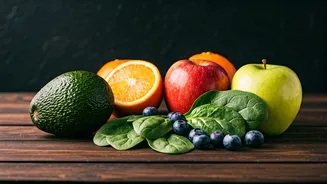Fiber's Cholesterol Fight
Fiber, especially soluble fiber, is a true champion in the battle against high cholesterol. Foods rich in soluble fiber work by binding with cholesterol in the digestive
system, preventing its absorption into the bloodstream. This process helps your body eliminate excess cholesterol. Excellent sources of soluble fiber include oats, barley, apples, pears, and beans. Incorporating these foods into your daily diet is a simple yet powerful way to support healthy cholesterol levels. For example, a bowl of oatmeal for breakfast or adding beans to your lunch can contribute significantly. Remember, the goal is to make these foods a regular part of your eating habits to maintain their cholesterol-lowering benefits over time. Consistency is key when it comes to dietary changes and their impact on your health.
Healthy Fats' Advantage
Not all fats are created equal; choosing the right ones is vital. Unsaturated fats, found in foods such as avocados, olive oil, and nuts, can actually help lower LDL (bad) cholesterol levels while increasing HDL (good) cholesterol. Swapping saturated and trans fats (found in many processed foods and fried items) for unsaturated fats is a beneficial step. Consider using olive oil for cooking, enjoying a handful of almonds as a snack, or adding avocado to your meals. These changes offer multiple health benefits. However, it's important to consume fats in moderation, as they are calorie-dense. Focusing on portion sizes and incorporating a variety of healthy fats is essential for an effective dietary strategy. This approach not only aids cholesterol management but also contributes to overall cardiovascular well-being.
Plant Sterols/Stanols
Plant sterols and stanols are naturally occurring substances found in plants that can help block the absorption of cholesterol in the intestines. Many foods, like fortified orange juice, yogurt, and certain spreads, are now enriched with these compounds. Regular consumption of plant sterols and stanols can lead to a noticeable reduction in LDL cholesterol levels. For example, you might choose a yogurt with added sterols for breakfast or use a stanol-enriched spread on your toast. The key is to check food labels for the presence and amount of these substances. When combined with other dietary changes, plant sterols and stanols provide an additional layer of support for managing cholesterol. Integrating these into your diet requires careful label reading and a proactive approach to food choices.
The Power of Soy
Soy products, such as tofu, edamame, and soy milk, have been linked to modest reductions in LDL cholesterol. Including soy in your diet can be a delicious and versatile way to support heart health. Soy protein can be added to meals in various ways, from incorporating tofu into stir-fries to using soy milk in your morning cereal or coffee. While the cholesterol-lowering effect of soy is not as dramatic as some other foods, its overall nutritional profile makes it a healthy addition to your diet. Soy is a good source of protein, fiber, and other beneficial nutrients. As with any dietary change, consistency and incorporating soy as part of a balanced diet are key. Experimenting with different soy products and recipes can help you find enjoyable ways to incorporate this food group into your meals.
Dietary Adjustments Matter
Besides specific foods, making overall dietary adjustments is crucial for lowering cholesterol. Limiting saturated and trans fats, which are often found in processed foods, red meat, and fried items, is a primary step. It is also important to eat plenty of fruits, vegetables, and whole grains. These foods provide essential nutrients and fiber. Reducing your intake of added sugars and refined carbohydrates can also aid in improving cholesterol levels. When planning your meals, focus on lean protein sources, such as fish and poultry, and opt for healthy cooking methods like baking, grilling, or steaming rather than frying. Being mindful of portion sizes and making conscious food choices can significantly impact cholesterol levels and overall health. A holistic approach that combines food choices with lifestyle changes is key to long-term success.
